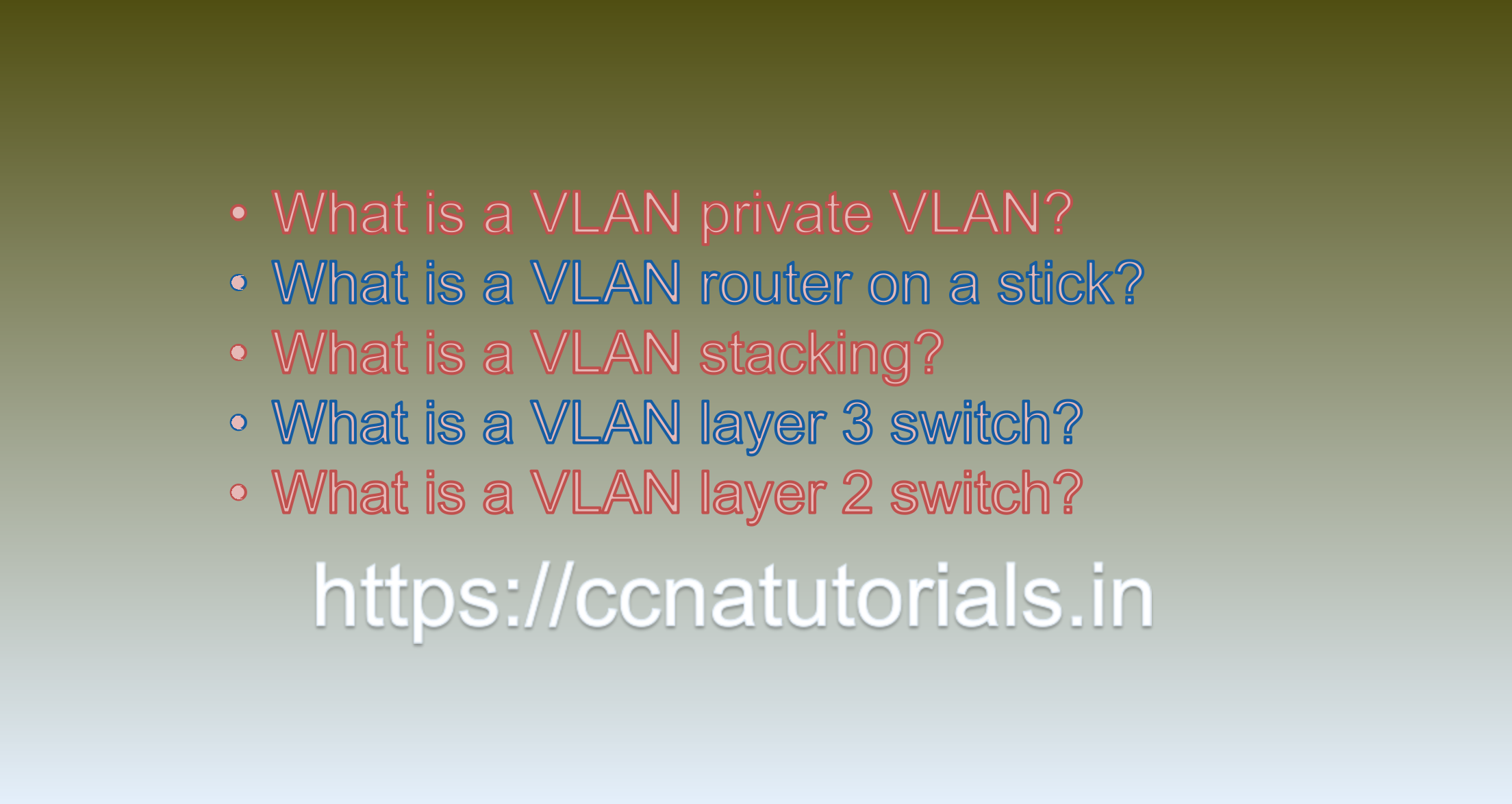Contents of this article
In this article, I describe some CCNA sample questions for practice before appearing in the CCNA 200-301 exam. The following questions are basic questions and related to the CCNA sample questions set 27. There are multiple sample questions set on this website for prior practice online. All questions are described with relevant answers. You can take the following questions and answer as reference for CCNA 200-301 exam. You may also need to do more practice with other websites and books to practice the CCNA sample questions set 27.
Question 1. What is a VLAN private VLAN?
A Private VLAN (PVLAN) is a type of VLAN that enables the creation of multiple isolated subnets within a single VLAN. With PVLAN, a single VLAN is divided into sub-VLANs, where each sub-VLAN is isolated from one another at Layer 2.
In a PVLAN, there are two types of ports:
- – Promiscuous port: This is the port that connects to the router, firewall, or any other device that needs to communicate with all sub-VLANs in the PVLAN.
- – Isolated port: This is the port that connects to a host, which can communicate only with the promiscuous port.
- – Community port: This is the port that connects to hosts, which can communicate with each other and with the promiscuous port but cannot communicate with other communities.
PVLANs provide an additional layer of security by isolating traffic between hosts within the same VLAN, which can prevent malicious attacks and improve network performance. They are commonly used in service provider networks, data centers, and enterprise networks. This is the answer to question 1 of CCNA sample questions set 27.
Question 2. What is a VLAN router on a stick?
A VLAN router on a stick is a network topology where a single physical router interface is used to route traffic for multiple virtual local area networks (VLANs). This is accomplished by configuring a router interface with subinterfaces, with each subinterface associated with a different VLAN. The VLAN router on a stick provides inter-VLAN routing by forwarding traffic between the different VLANs using the subinterfaces on the router. The term “on a stick” refers to the fact that the single router interface is essentially a trunk link carrying multiple VLANs, with each VLAN represented as a separate subinterface. This approach can be used to reduce the number of physical interfaces required on the router while still allowing for multiple VLANs to communicate with each other. This is the answer to question 2 of CCNA sample questions set 27.
Question 3. What is a VLAN stacking?
VLAN stacking is a method of combining multiple VLANs into a single logical unit, known as a “stack”. This is achieved by configuring a special type of port, known as a “stack port”, on each switch that participates in the stack. The stack port is used to pass VLAN traffic between switches in the stack, allowing them to function as a single unit.
One of the main benefits of VLAN stacking is that it allows for greater scalability and flexibility in network design. By combining multiple VLANs into a single stack, administrators can more easily manage network traffic and optimize network performance. VLAN stacking is also useful for creating redundant network paths, as it allows for automatic failover in the event of a switch failure.
VLAN stacking is commonly used in enterprise-level networks, where large numbers of switches need to be managed across multiple locations. However, it can also be used in smaller networks to improve performance and simplify network management. This is the answer to question 3 of CCNA sample questions set 27.

Question 4. What is a VLAN layer 3 switch?
A VLAN layer 3 switch, also known as a multilayer switch, is a network switch that can perform routing and switching functions at the same time. In other words, it can route traffic between different VLANs and perform switching operations within each VLAN. This is accomplished by assigning IP addresses to each VLAN and configuring routing protocols, such as OSPF or EIGRP, to enable communication between them. A VLAN layer 3 switch can provide better network performance, scalability, and security by reducing the amount of traffic that needs to be processed by routers and firewalls. This is the answer to question 4 of CCNA sample questions set 27.
Question 5. What is a VLAN layer 2 switch?
A VLAN layer 2 switch is a type of network switch that operates at Layer 2 (Data Link layer) of the OSI (Open Systems Interconnection) model and is capable of creating and managing Virtual Local Area Networks (VLANs). It is designed to handle Ethernet frames and uses the MAC addresses of devices connected to its ports to forward traffic between them. A VLAN layer 2 switch can be used to segment network traffic into different VLANs, allowing for greater network efficiency and security by restricting communication between devices on different VLANs. Unlike a Layer 3 switch, a Layer 2 switch does not perform routing functions and does not support IP addressing. This is the answer to question 5 of CCNA sample questions set 27.
Conclusion for CCNA sample questions set 27
In this article, I described 5 questions with answers related to CCNA 200-301 exam. I hope you found these questions helpful for the practice of the CCNA 200-301 exam. You may drop a comment below or contact us for any queries related to the above questions and answers for CCNA 200-301. Share the above questions If you found them useful. Happy reading!!






